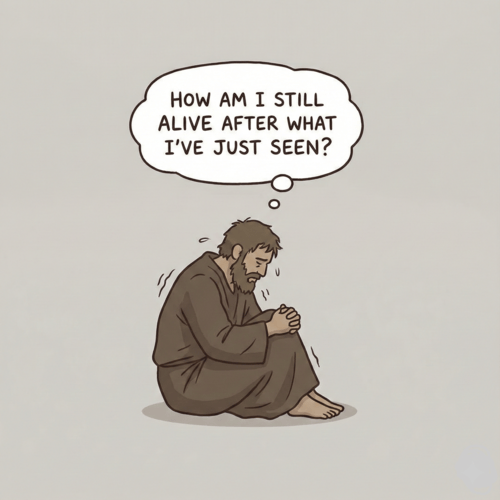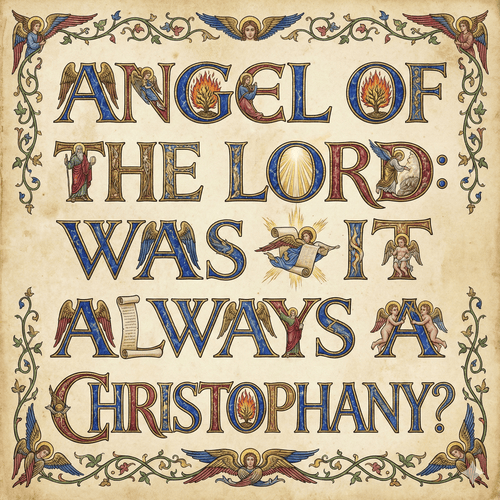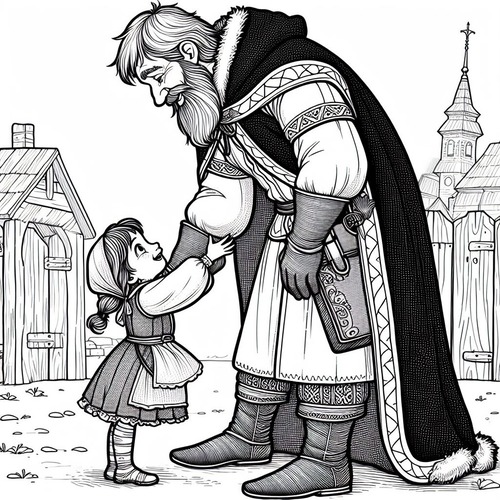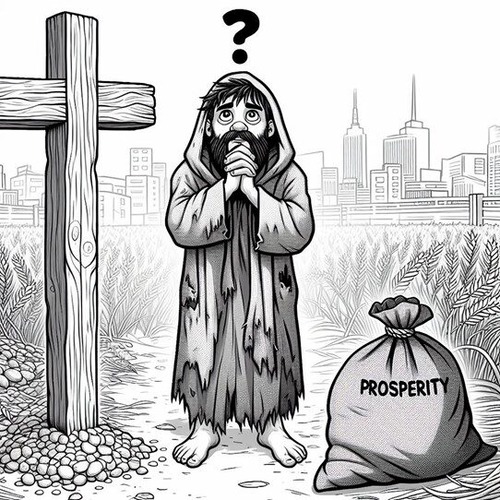Grace in Motion: Why Did the Prodigal’s Father Run?
LOVE THAT SIMPLY CANNOT WAIT: UNPACKING LUKE 15:20
Why did the prodigal’s father run? In some cultures, prodigal children who squander their inheritance often return to face stern patriarchs seated in judgement. These fathers typically remain unmoved, watching from a distance as their wayward children approach in humiliation. They wait, testing the sincerity of their children’s repentance, measuring whether they’re truly worthy of restoration.
But the God of the Bible turns this expectation upside down. In Luke 15:20, we encounter something breathtaking: This father doesn’t wait. He doesn’t test. He doesn’t maintain his dignity. He runs.
This simple detail—a father running to embrace his wayward son—contains the very heart of the gospel and reveals the stunning character of God’s love. The sovereign God of the universe doesn’t wait for His children to crawl back in perfect repentance. He races toward them, overcome with compassion, unable to wait a moment longer for reconciliation.
THE SCANDAL OF A RUNNING PATRIARCH
To grasp the full impact of the scene, we must first understand its cultural context. In the ancient Near East, dignified men—especially wealthy patriarchs—did not run. Running required lifting one’s robes, exposing the legs, which was considered deeply undignified and shameful. For a man of status to run in public was shocking, even scandalous.
Yet this father disregards cultural expectations entirely. He lifts his robes, exposes his legs, and runs publicly toward his disgraced son. In that moment, the father willingly bears shame—not to preserve his honour, but to restore his son.
This is no minor detail in Jesus’ storytelling. This is a deliberate, radical portrait of divine love that transcends cultural boundaries and shatters our human expectations of justice and dignity.
GRACE THAT MOVES FIRST
“But while he was still a long way off, his father saw him…”
Notice the order of events. The father sees the son first, from a distance. This detail reveals something profound about God’s character—He is watching, waiting, and looking for our return even before we fully commit to it. His eyes scan the horizon, hoping for any sign of our homecoming.
This mirrors what Scripture teaches about God’s initiative in our salvation. Romans 5:8 reminds us that “while we were still sinners, Christ died for us.” And 1 John 4:19 states plainly, “We love because he first loved us.”
The father’s vigilance reveals God’s sovereign grace—a grace that precedes our repentance and makes it possible. The son was still formulating his rehearsed speech of contrition, still uncertain of his reception, still “a long way off* both physically and spiritually. Yet the father was already moving toward reconciliation.
COMPASSION THAT CANNOT STAY STILL
“…and was filled with compassion for him…”
The Greek word used here—splagchnizomai—describes a visceral, gut-wrenching emotional response. This isn’t mere sympathy; it’s a deep, physical ache of love that compels action. The same word is used to describe Jesus’ response when He sees the crowds “like sheep without a shepherd” (Matthew 9:36) and when He encounters suffering (Matthew 14:14).
This compassion isn’t passive. It cannot remain seated, dignified, or unmoved. It propels the father forward. With an urgent love.
How different from the distant, stoic gods of human imagination! The true God feels deeply for His children. When we suffer in our sin and separation, He doesn’t observe dispassionately—He is moved to the core of His being. And that compassion translates immediately into action.
THE EMBRACE THAT PRECEDES CONFESSION
“…he ran to his son, threw his arms around him and kissed him.”
Perhaps most striking is the timing of the father’s embrace. The son hasn’t yet delivered his carefully rehearsed speech. He hasn’t formally repented. He hasn’t proven his sincerity or worthiness. Yet the father embraces and kisses him before even a single word is spoken.
This sequence powerfully illustrates that God’s grace precedes and enables our repentance—not the other way around. The father’s unconditional welcome creates the safe space in which true confession can happen. The son’s rehearsed speech falters in the face of such overwhelming love (Luke 15:21-22).
Ephesians 1:4-5 reminds us God “chose us in him before the creation of the world” and “*predestined us for adoption to sonship.” The father’s run toward his son is a vivid picture of this electing love—a love determined before the foundations of the world.
RESTORATION THAT DEFIES IMAGINATION
The father’s actions go beyond mere forgiveness. He calls for the best robe, a ring, shoes, and a feast—all symbols of full, unconditional restoration to sonship and honour. The son who was spiritually dead is alive again; the one who was lost is found (Luke 15:24).
This mirrors the extravagant grace described in Ephesians 2:4-7, where God makes us alive with Christ and seats us with Him in the heavenly realms. The father in the parable doesn’t merely tolerate his returned son or assign him a lesser status. He lavishes upon him all the privileges of sonship.
WHY DID THE PRODIGAL’S FATHER RUN? THE THROBBING HEART OF THE GOSPEL
In this single act of a father running to embrace his wayward son, we find the essence of the gospel. God doesn’t wait for us to clean ourselves up or prove our worth. He takes the initiative, bears our shame, and races toward reconciliation. His sovereign grace precedes our repentance, His compassion compels His action, and His restoration exceeds our expectations.
This is grace in motion—not a static concept, but a dynamic, pursuing love that cannot stay still when His children are far from home.
The question isn’t whether God will welcome us back. The question is whether we will lift our eyes to see the Father already running toward us, arms open wide, ready to restore us not as servants, but as beloved children.
CONCLUSION: WHY DID THE PRODIGAL’S FATHER RUN?
“How deep the Father’s love for us, how vast beyond all measure…”
Every parent knows that throbbing ache of love—that overwhelming desire to protect, restore, and embrace regardless of the past.
In this single detail of the running father in Luke 15:20, Christ reveals a tender side of God the world often overlooks or cannot comprehend. This isn’t the stern, distant deity of human imagination, but a Father whose heart beats with longing for His children. The same Father whose love was so vast that He sent His only Son to bridge the chasm our sin had created. The running father in this parable gives us just a glimpse of the love that moved heaven to earth for our sake.
And if this earthly story moves us, oh, what will it be like to experience the fullness of our Father’s embrace for eternity? What joy awaits when we’re finally home, forever held in the arms that have always been running toward us.
WHY DID THE PRODIGAL’S FATHER RUN? RELATED FAQs
How does the celebration in the Prodigal Son parable connect to Jesus’ teachings about heaven? The extravagant feast thrown by the father mirrors Jesus’ teaching that “there is joy in the presence of the angels of God over one sinner who repents” (Luke 15:10). This celebration reveals that our return to God doesn’t merely result in quiet acceptance but sparks divine jubilation. Heaven isn’t stoic about salvation—it erupts in joy when lost children come home.
- What do the other “lost” parables in Luke 15 (the lost sheep and lost coin) reveal about God’s character? The lost sheep and lost coin parables show God as one who searches diligently for what is lost, regardless of value by worldly standards. In these parables, God is portrayed as actively seeking the lost (not merely waiting), showing that divine love is both initiating and persistent. Together with the Prodigal Son, these parables form a powerful trilogy emphasizing God’s determined pursuit of the lost.
- Why did Jesus specifically mention the father “kissing” his son, and what theological significance does this have? The kiss (Greek: katephilēsen) describes not a formal greeting but an affectionate, repeated kissing that communicates deep emotion and intimate love. Theologically, this represents God’s delight in restoration and the intimate communion He desires with His children. The kiss precedes the son’s confession, illustrating that God’s affection isn’t earned by perfect repentance.
How does the elder brother’s reaction contrast with the father’s, and what does this teach us? The elder brother’s cold legalism stands in stark contrast to the father’s warm grace—he cannot celebrate because he values merit over mercy. His refusal to join the celebration despite having “never disobeyed” reveals that outward obedience without heartfelt love misses the essence of relationship with God. The father’s gentle response to his anger (“everything I have is yours”) shows that God’s grace toward others doesn’t diminish His generosity toward us.
- What is the significance of the father giving the son a ring, and how does this relate to our spiritual inheritance? The ring was likely a signet ring, symbolising authority, belonging to the family, and the right to conduct business on the father’s behalf. Spiritually, this represents our adoption as children of God with full inheritance rights (Romans 8:15-17). The father doesn’t merely forgive the son but restores him to a position of honour and trust, paralleling how God doesn’t just pardon us but gives us His authority and name.
- How does the father’s treatment of his prodigal son challenge our own approach to those who have wronged us? The father’s response establishes a radical standard of forgiveness that doesn’t demand grovelling or a period of probation. His example challenges us to move beyond conditional forgiveness to pursue reconciliation with the same urgency and completeness that he demonstrated. This doesn’t mean ignoring real harm, but rather modelling the initiating, gracious love that God has shown us.
Why didn’t the father send a servant to bring his son instead of running himself? The father runs personally because reconciliation cannot be delegated—it’s an intimate act requiring the humility and presence of the one offering forgiveness. This foreshadows how God Himself came in the person of Christ rather than sending a representative to achieve our reconciliation. The father’s personal action emphasizes that restoration is never merely procedural but deeply relational and sacrificial.
WHY DID THE PRODIGAL’S FATHER RUN? OUR RELATED POSTS
- The Ordo Salutis: What are the Seven Steps in Our Salvation?
- Can a Sinner be Saved from Sin’s Consequences? Is There Hope?
- Consequences of Sin in Genesis 3: Fall and Redemption
- Salvation: By Faith Or Works? Or Both?
- Assurance of Salvation: Can I Really Know I’m Saved?
- God’s Foreknowledge: Far More Than Mere Foresight
Editor's Pick

The Throne-Room Vision: Who Did Isaiah See?
The scene is unforgettable: Isaiah stands in the temple, and suddenly the veil between heaven and earth tears open. He [...]

The Angel of the Lord: Can We Be Certain It Was Christ All Along?
Throughout the Old Testament, a mysterious figure appears: the Angel of the LORD. He speaks as God, bears God’s name, [...]
SUPPORT US:
Feel the Holy Spirit's gentle nudge to partner with us?
Donate Online:
Account Name: TRUTHS TO DIE FOR FOUNDATION
Account Number: 10243565459
Bank IFSC: IDFB0043391
Bank Name: IDFC FIRST BANK






